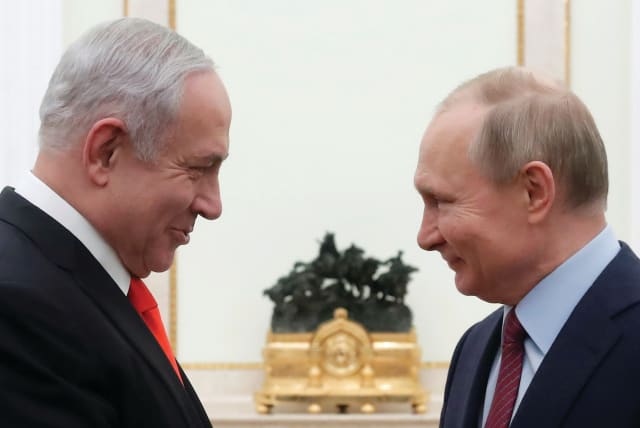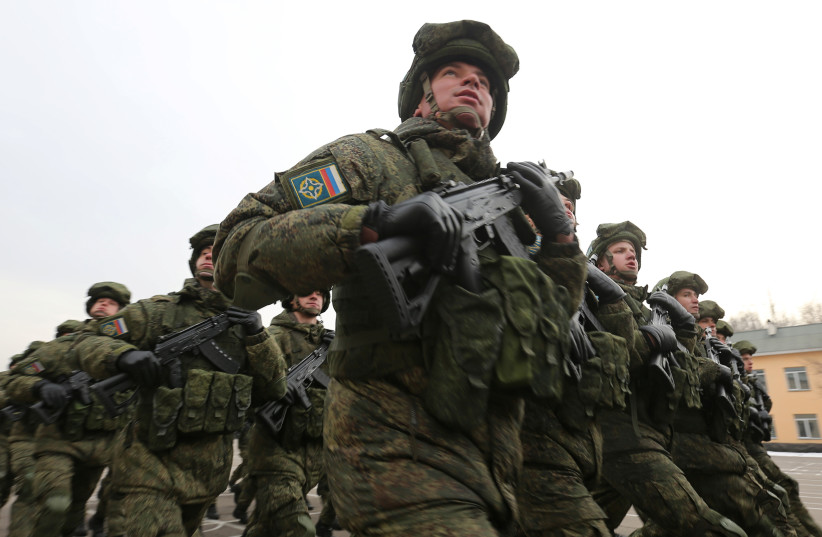Ending Russia’s war against Ukraine: Scenarios from Israel’s experiences - opinion

Is it not possible that, like in Lebanon, an accommodation that is unacceptable today will become feasible tomorrow?
The war in Ukraine has been raging for over a year, with no end in sight. It has been reported that Russian military casualties exceed 200,000 dead and wounded, while the Ukrainian military may have lost as many as 100,000 troops. These estimates exclude the numerous killed and maimed among Ukraine’s civilian population.
As the conflict goes on, this carnage will only continue unabated. Can Israel’s experiences offer scenarios for a way out?
A ceasefire without peace
In May 1948, a day after Israel’s declaration of independence, all the neighboring Arab states invaded the territory of former British Mandatory Palestine to destroy the Jewish state at its birth.
Like Ukraine’s 2022 defense against Russia’s assault, back then the Jews’ ability to defend their newfound sovereignty also surprised many experts. After much difficult fighting, in 1949 a series of armistice agreements were reached that put an end to the first Arab-Israel war.
Those agreements were by no means peace treaties. The Arab states stubbornly refused to acknowledge Israel’s right to exist or renounce the possibility of a second round of hostilities. But the armistice arrangements did, over a period, serve to create demarcation lines that contained and stabilized the conflict.
Today, with Kyiv demanding a complete withdrawal of Russian forces, including from all the areas taken since 2014, and with Moscow insisting on its sovereignty in Crimea and the other annexed areas, a full Russia-Ukraine peace treaty seems improbable.
At the same time, it appears that neither Kyiv nor Moscow will be able to force the other side to surrender. Given this reality, the model of an armistice agreement, whereby a ceasefire is achieved while both sides maintain their opposing political positions, could provide a way forward.
An armistice would not bring about the immediate full restoration of Ukraine’s territorial integrity. But achieving such a goal by military means is also highly uncertain, and an armistice would safeguard Ukrainian independence while halting the bloodshed. It is said that diplomats should never let the perfect stand in the way of the possible.
International mediation
Israel’s 1949 armistice agreements were negotiated through the offices of African American diplomat Ralph Bunche, who served as the UN’s chief Arab-Israel mediator. Bunche provided the auspices, the framework, and much valuable input for the talks, receiving the 1950 Nobel Peace Prize for his efforts.
There are other examples of successful mediation that helped facilitate Arab-Israel ceasefires. In 1970, US secretary of state William Rogers facilitated an agreement along the Suez Canal that put an end to the War of Attrition. And following the 1973 Yom Kippur War, secretary of state Henry Kissinger negotiated military disengagements on both the Egyptian and Syrian fronts.
Any mediator charged with ending the Ukraine war will need to have the confidence of both sides. Unsurprisingly, it is not clear that the UN will be able to fulfill its ostensive function. China has forwarded a 12-point framework for a political settlement, but few see Beijing’s proposal as offering a breakthrough. Turkey, after successfully brokering two Black Sea grain export deals, is a more likely candidate for mediation.
An Israeli role has also been promoted. In March 2022, at the prompting of German Chancellor Olaf Scholz and with the blessing of Ukrainian President Volodymyr Zelensky, prime minister Naftali Bennett met with Russian President Vladimir Putin in the Kremlin to explore a possible ceasefire.
Hypothetically at least, Prime Minister Benjamin Netanyahu is even better positioned to help. Over the years Netanyahu has developed a rapport with Putin, a relationship that could enable Israel’s prime minister, in the right international circumstances, to become an effective intermediary.
Racing toward the Suez Canal
In the June 1967 Six Day War, the IDF attacked and defeated Egypt’s military formations in the Sinai Peninsula – forces that had been poised to invade the Negev.
Israel’s victory was absolute. The IAF’s preemptive strike crippled the Egyptian air force in the opening hours of the conflict, granting Israel complete air superiority for the duration of the war. That initial gambit was followed by the expeditious movement of Israel’s armored columns that crushed all organized Egyptian opposition.
Israel’s defense minister, the eye-patched Moshe Dayan, had ordered the IDF to cease its advance before reaching the banks of the Suez Canal. Dayan was concerned about international reaction to the closing of a major global maritime artery and feared provoking a Soviet intervention.
But the defense minister’s instructions were ignored by the IDF’s commanders. The speed of Israel’s offensive dictated the realities on the ground: Life magazine famously featured on its cover the image of lieutenant (later general) Yossi Ben-Hanan refreshing himself in the Canal’s waters while triumphantly clutching a captured Soviet-made AK-47 assault rifle.
Although Israel could have continued its offensive into Egypt, the canal made for a natural ceasefire line and a logical place for the IDF to halt its advance.
A geographical barrier could be similarly found for the opposing Russian and Ukrainian forces to deploy behind. Some have suggested that the Donets River in Eastern Ukraine could provide such a topographical boundary. Ukrainians, who understandably wish to see their entire land liberated, discount any such possibility.
Lebanese burnout
The saga of Lebanon’s civil war (1975-90) is also instructive. That drawn-out internecine conflict resulted in an estimated 120,000 fatalities and an exodus of almost a million people from Lebanon, approximately a quarter of the country’s total population.
The years of inconclusive violence, the failure of one side to achieve outright victory, and just sheer exhaustion, led to the signing of the 1989 Taif Agreement that marked the beginning of the end of the fighting.
Theoretically, an analogous solution could have been achieved years earlier, but the warring parties had to first realize their inability to dictate a military solution and grow weary of a never-ending conflict. Only then did the requisite compromises become acceptable.
Today, Kyiv and Moscow may believe time is on their side and that a future offensive bringing them victory is just around the corner. But such hopes are likely to be wishful thinking, it being dubious that any battlefield breakthrough for one party will lead to the capitulation of the other.
In the meantime, combat continues, with both Russia and Ukraine paying an ever-increasing price in blood and treasure. Is it not possible that, like in Lebanon, an accommodation that is unacceptable today will become feasible tomorrow?
Tragically, reaching such a point necessitates many more deaths.
The writer, formerly an adviser to the prime minister, is chair of the Abba Eban Institute for Diplomacy at Reichman University. Connect with him on LinkedIn, @Ambassador Mark Regev.
Jerusalem Post Store
`; document.getElementById("linkPremium").innerHTML = cont; var divWithLink = document.getElementById("premium-link"); if (divWithLink !== null && divWithLink !== 'undefined') { divWithLink.style.border = "solid 1px #cb0f3e"; divWithLink.style.textAlign = "center"; divWithLink.style.marginBottom = "15px"; divWithLink.style.marginTop = "15px"; divWithLink.style.width = "100%"; divWithLink.style.backgroundColor = "#122952"; divWithLink.style.color = "#ffffff"; divWithLink.style.lineHeight = "1.5"; } } (function (v, i) { });

